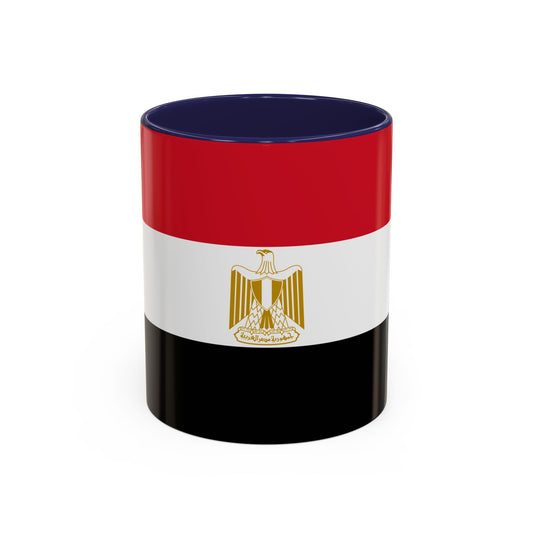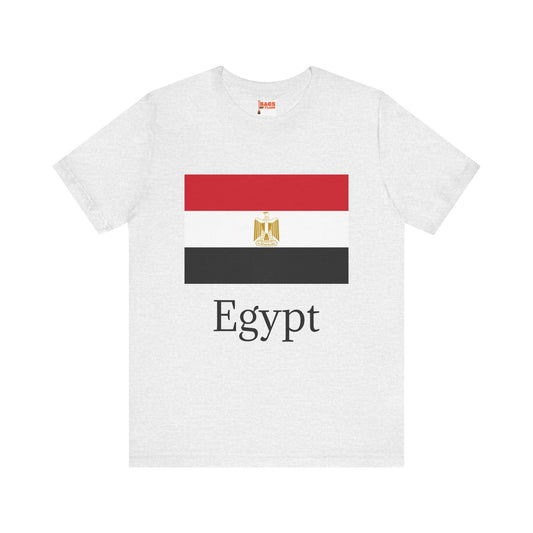-
Egypt Pillow
Regular price $22.65 USDRegular priceUnit price / per -
Egypt Backpack
Regular price $59.79 USDRegular priceUnit price / per -
Egypt Leather Patch Hat
Regular price $18.85 USDRegular priceUnit price / per -
Egypt Flag Sweatshirt
Regular price $34.15 USDRegular priceUnit price / per -
Egypt Sweatshirt
Regular price $34.15 USDRegular priceUnit price / per -
Egypt Trucker Cap
Regular price $14.90 USDRegular priceUnit price / per -
Egypt Hoodies
Regular price $34.40 USDRegular priceUnit price / per -
Egypt T-shirts
Regular price $22.79 USDRegular priceUnit price / per -
Egypt Flag Hoodies
Regular price $34.40 USDRegular priceUnit price / per -
Egypt Flag on T-shirt
Regular price $22.79 USDRegular priceUnit price / per
Collection: Egypt
The Egyptian flag, also known as the flag of Egypt, symbolizes national pride and identity for the country. With its unique design and colors, the flag holds significant historical and cultural importance to the people of Egypt. Let's explore the evolution of the Egyptian flag from its inception to its current relevance in today's society.
Overview of the Egypt Flag's Design and Colors

The national flag of Egypt showcases a distinct tricolor configuration comprising horizontal stripes in red, white, and black. At the flag’s core, within the white band, lies the Eagle of Saladin, a prominent national emblem. Each hue on the flag carries deep-seated meanings integral to Egyptian identity and history. The topmost red stripe signifies the sacrifices and courage of those who laid down their lives fighting for Egypt's independence.
The central white stripe is symbolic of the nation's aspirations for peace and purity in the aftermath of struggle and turmoil. Lastly, the black stripe at the bottom anchors the flag with a reminder of Egypt's enduring and rich ancient heritage. This interplay of colors and emblem provides the flag with its aesthetic appeal and embeds it with a narrative that bridges Egypt’s storied past with its aspirations for the future.
Historical Context and Evolution of the Flag

The evolution of the Egyptian flag mirrors the nation's turbulent and dynamic history, marked by a series of political upheavals and transformations. Prior to the current flag's adoption in 1984, Egypt's national symbol underwent multiple revisions, each reflecting a particular era and political climate. The journey began in 1922 when Egypt gained nominal independence from British rule, and a green flag with a white crescent and three stars was introduced, symbolizing the country's majority Muslim population and its ancient heritage.
Subsequent decades saw Egypt's identity and politics evolve, mirrored by changes in the national flag. The formation of the United Arab Republic in 1958, a political union with Syria, led to the adoption of a red, white, and black tricolor with two green stars representing the two states. Although the union dissolved in 1961, the color scheme persisted, emphasizing a continued aspiration for Arab unity.
It wasn't until 1984 that the flag underwent its last significant change, incorporating the Eagle of Saladin to replace the stars and firmly rooting the flag in a narrative that bridged Egypt’s ancient past with contemporary aspirations for sovereignty and unity. This final iteration was more than a political symbol; it reflected Egypt's enduring legacy and ongoing journey toward self-determination and peace.
Symbolism Embedded in the Flag's Design
The red, white, and black tricolor on the Egyptian flag is laden with historical and cultural significance, each hue narrating a different chapter of the nation's past and its vision for the future. Red is a testament to the bravery and sacrifices of Egyptians who fought for the country's freedom, encapsulating the spirit of those who have perished for national independence. White symbolizes the bright and peaceful future that Egypt strives for, marking a stark contrast to the struggles that have characterized its past. It embodies the nation's desire for purity and tranquility in the aftermath of conflict.
The black stripe, meanwhile, serves as a sad reminder of the oppression and dark times faced by the Egyptians, linking back to the nation's resilience and the rich tapestry of its ancient civilization. Centered on the flag, the Eagle of Saladin is more than a historical emblem; it represents power, sovereignty, and the unyielding strength of the Egyptian people. Together, these elements not only define the visual identity of the Egyptian flag but also weave a narrative of liberation, hope, and enduring strength that resonates with each Egyptian.
The Current Relevance of the Egypt Flag
Today, the flag of Egypt is a pervasive symbol in the country, waved at national celebrations, respected in military parades, and honored at governmental occasions. It is a beacon of unity and patriotism, evoking Egyptians' shared sense of belonging. In contemporary times, the flag has also played a significant role in political protests and movements, serving as a rallying emblem for change and democracy.
Its presence in such events underscores the deep connection between the nation's identity and its aspirations for the future. Although debates over its symbolism and design occasionally surface, they reflect the dynamic nature of national identity and the ongoing dialogue about Egypt's past, present, and future. The flag is a constant reminder of the values and history it embodies, weaving the fabric of Egyptian society closer together.
Additional Facts and Protocols Related to the Flag
In addition to its rich symbolic significance, there are established norms and regulations governing the display and handling of the Egypt flag to preserve its dignity and respect. One of the key protocols is that the flag must always be hoisted aloft and in a prominent position relative to any other flags present, ensuring its supremacy and preeminence. Additionally, when the flag is displayed, it must never come into contact with the ground, a sign of utmost respect for the nation's emblem. In instances where multiple flags are flown, the Egypt flag takes precedence, and special care is taken to ensure it is the last raised and the first lowered.
An interesting piece of trivia about the flag is its inspiration from the Arab Liberation Flag, which also features the pan-Arab colors of red, white, and black. These colors have come to symbolize not just the unity and identity of Egypt but also the broader aspirations of Arab nationalism. Furthermore, the selection of the current design was the outcome of a national competition, highlighting the inclusive approach towards fostering a collective national identity. This method of selection underscores the flag's role as a cohesive symbol for all Egyptians, embodying the shared values and aspirations of the nation.
These protocols and anecdotes underscore the reverence with which the flag is treated in Egypt and the collective pride it engenders among its people, further cementing its role as a vital national symbol.






















